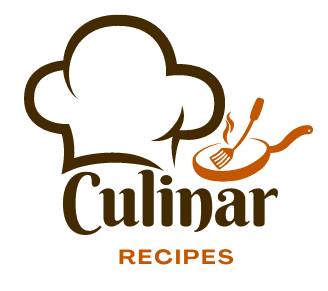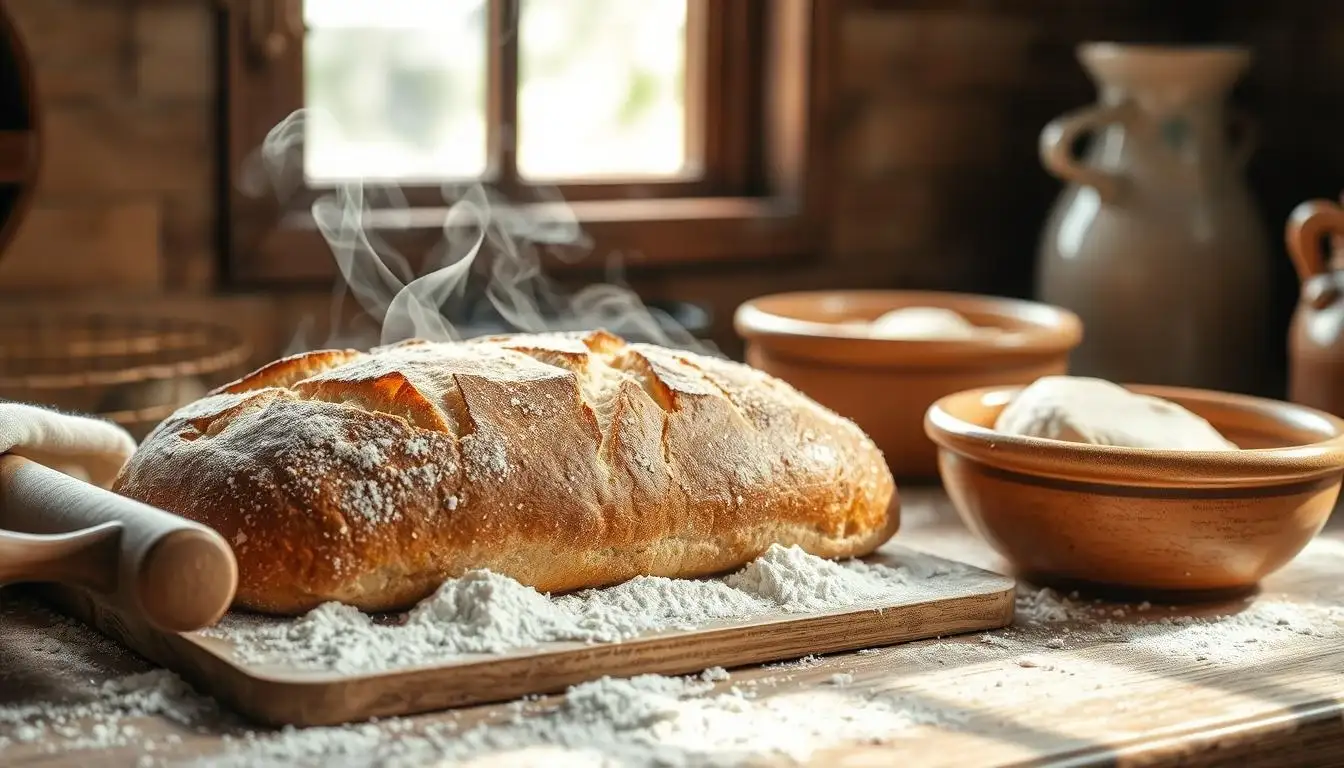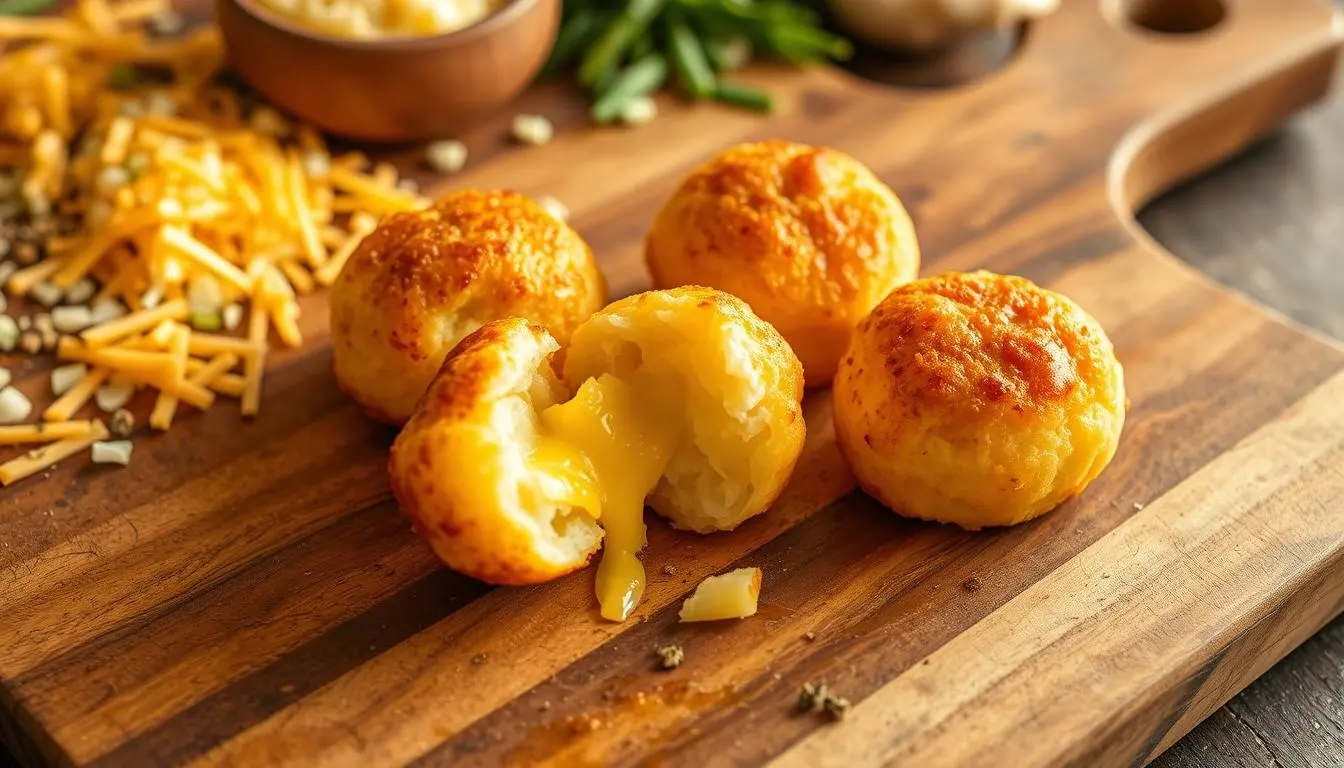Table of Contents
I remember the first time I made homemade bread with King Arthur’s recipe. The kitchen was filled with the smell of fresh bread. The taste was amazing. King Arthur’s flour made a loaf that everyone loved.
If you want to bake a tasty loaf, you’re in the right spot. We’ll dive into the King Arthur bread recipe. It’s a classic and simple way to make homemade bread.
King Arthur’s unbleached bread flour is perfect for homemade bread. This recipe is great for beginners and experienced bakers alike. It’s a fantastic way to start baking and impress your loved ones with homemade bread.
The King Arthur bread recipe is easy to follow and needs just a few ingredients. You can make a delicious homemade bread in a few simple steps. It’s perfect for sandwiches, toast, or just enjoying on its own. So, if you want to learn how to bake a delicious loaf, keep reading to find out more about the King Arthur bread recipe.
My Journey with King Arthur Bread Making
I’ve always been drawn to bread making. My journey with King Arthur has been rewarding. With a simple bread recipe, I make delicious homemade bread for any occasion. King Arthur’s high-protein flour is key for tasty homemade bread.
The King Arthur website says high-protein flour is vital for a simple bread recipe. It makes the bread tender. King Arthur flours have different protein levels. For example, King Arthur Unbleached All-Purpose Flour has 11.7% protein, and King Arthur Bread Flour has 12.7%.
Why I Choose King Arthur Flour
I pick King Arthur flour for its quality and consistency. With a 224-year history, King Arthur is a trusted brand. It’s 100% employee-owned and focuses on quality and sustainability. This makes them a top choice for a simple bread recipe.
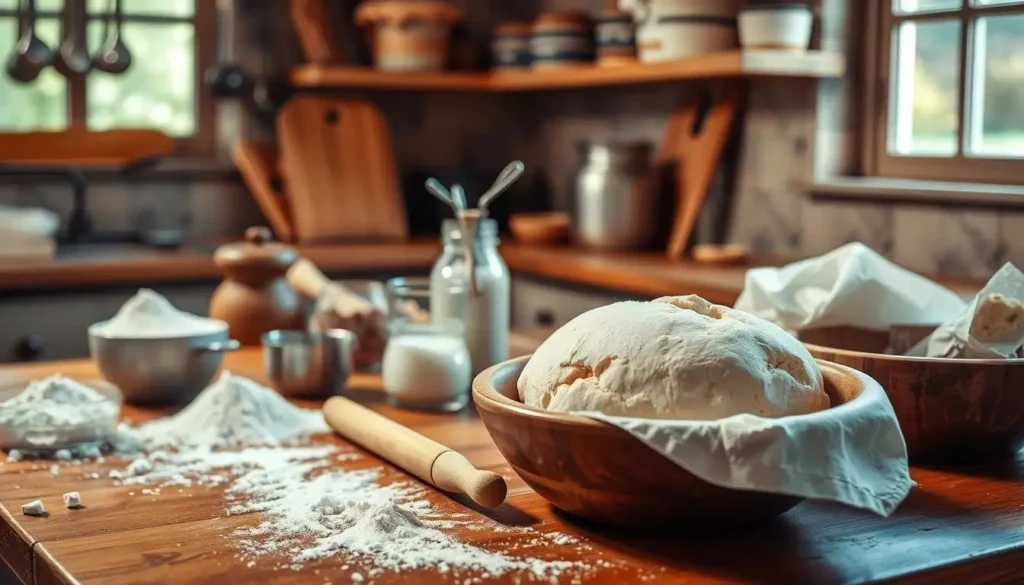
What Makes This Recipe Special
This simple bread recipe stands out because of its ingredients. It uses high-protein flour, yeast, and salt for a tender crumb. The recipe also includes an autolyse step, resting the dough for 15-30 minutes. This step enhances the flavor and texture.
| Flour Type | Protein Content |
|---|---|
| King Arthur Unbleached All-Purpose Flour | 11.7% |
| King Arthur Bread Flour | 12.7% |
| King Arthur High-Gluten Flour (Bagel flour) | 14% |
The Science Behind Perfect Bread
Perfect bread comes from understanding yeast, salt, and flour. Yeast fermentation breaks down starches, adding flavor and texture. Salt controls yeast and adds taste. Knowing these, you can make a simple bread recipe with a delicious crumb.
Essential Equipment for Baking Success
To make perfect baking bread, you need the right tools. King Arthur says a stand mixer or a big bowl, a measuring cup, and a wooden spoon are key. These help you mix, knead, and shape your dough well. This way, you’ll get a tasty homemade bread that will wow everyone.
Here are the must-have tools for baking bread:
- Stand mixer or large bowl
- Measuring cup
- Wooden spoon
Having the right tools makes baking bread easier and more fun. With these, you can make many types of bread. From simple sandwich loaves to fancy sourdough and soft dinner rolls.
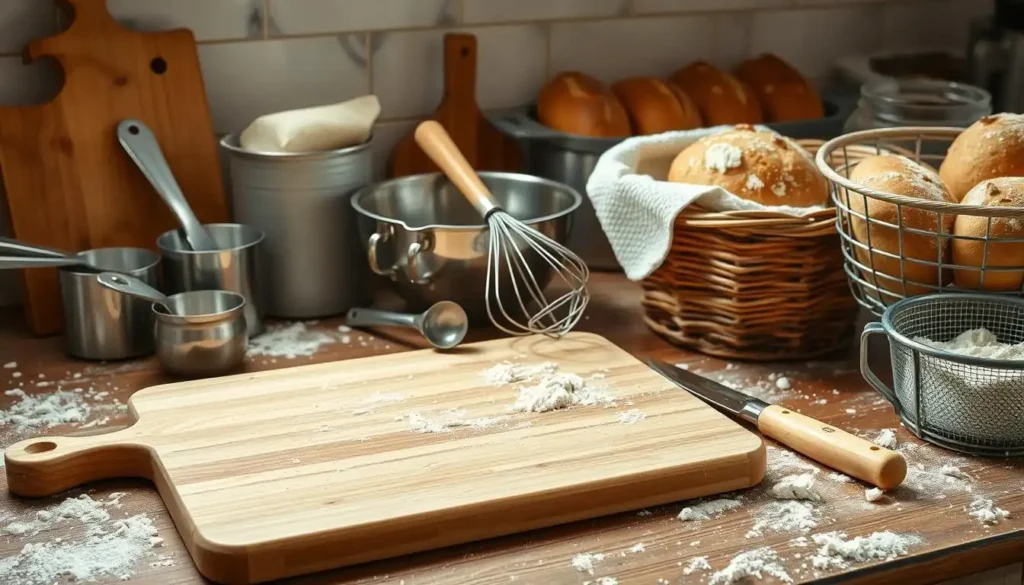
Quality equipment is worth the investment. It leads to better and more consistent results. So, if you’re serious about baking bread, get the essential tools you need.
| Equipment | Description |
|---|---|
| Stand Mixer | Used for mixing and kneading dough |
| Large Bowl | Used for mixing and rising dough |
| Measuring Cup | Used for accurate measurements |
| Wooden Spoon | Used for mixing and shaping dough |
Understanding the King Arthur Bread Recipe
To make a delicious loaf bread, knowing the key ingredients is key. The King Arthur bread recipe is a classic. It uses the right flour-to-water ratio for success. The recipe includes 3 cups of King Arthur Unbleached All-Purpose Flour, 1 cup of milk, 2 tablespoons of butter, and 2 teaspoons of instant yeast.
The flour-to-water ratio is crucial for the bread’s texture and consistency. The recipe calls for 1 2/3 cups of water, which is about 63.5% of the flour’s weight. Using the right ratio is essential for a perfect loaf.
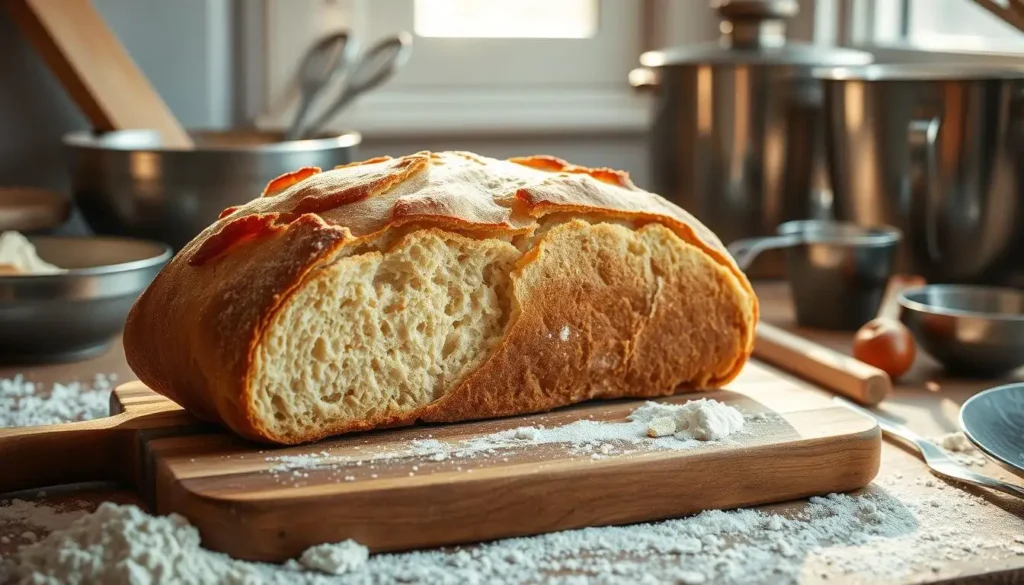
- 1 cup (227g) milk
- 2 tablespoons (28g) butter
- 2 teaspoons instant yeast or active dry yeast
- 2 tablespoons (25g) sugar
- 1 1/4 teaspoons (8g) salt
- 3 cups (361g) King Arthur Unbleached All-Purpose Flour
By following the King Arthur bread recipe, you can make a delicious homemade loaf. It’s perfect for any occasion.
| Ingredient | Quantity |
|---|---|
| Milk | 1 cup (227g) |
| Butter | 2 tablespoons (28g) |
| Yeast | 2 teaspoons |
| Sugar | 2 tablespoons (25g) |
| Salt | 1 1/4 teaspoons (8g) |
| Flour | 3 cups (361g) |
Preparing Your Kitchen and Ingredients
To bake tasty homemade bread, you need to get your kitchen and ingredients ready. The King Arthur website says having everything measured and ready is key for a smooth process. This simple step can greatly improve your bread’s quality.
Before starting, take time to look over the recipe and gather all needed ingredients. This keeps you organized and ensures you don’t miss anything important. For a basic homemade bread recipe, you’ll need flour, yeast, salt, and water. Make sure these are all measured and ready.
Here are some tips for preparing your kitchen and ingredients:
- Measure all ingredients accurately for the right mix.
- Use a digital scale for precise measurements.
- Get your mixing bowls, utensils, and other tools ready before starting.
- Keep your kitchen clean and organized to avoid distractions or accidents.
By following these tips, you’ll be on your way to baking delicious homemade bread. Stay organized, measure ingredients correctly, and keep your kitchen clean and safe.
The Perfect Temperature for Bread Making
Temperature is key when baking a delicious loaf. Knowing the ideal temperatures for each step is crucial. Whether you’re new or experienced, mastering temperature control is essential.
The best temperature for fermenting and proofing dough is about 85°F (29°C). This helps yeast work well, making the dough rise. But, temperatures over 90°F (32°C) can make the bread taste bad. Temperatures under 80°F (27°C) slow down the process.
For baking, the bread’s internal temperature is very important. Most yeast breads and rolls need to be 190°F. Baguettes, though, need to be between 205°F and 210°F. Using a thermometer, like ChefAlarm® or Thermapen®, is key to getting it right.
Room Temperature Guidelines
The room temperature is also crucial. It should be between 75°F and 78°F (24°C to 25°C) for mixing and kneading. This temperature helps the yeast work and the dough to develop the right texture.
Water Temperature Matters
Water temperature is also important. Water that’s too hot can kill the yeast. Water that’s too cold slows down the process. The best water temperature is between 100°F and 110°F (38°C to 43°C).
Optimal Proofing Environment
Creating the right proofing environment is vital. It should be about 85°F (29°C) and have high humidity. This helps the dough rise evenly and develop the right texture. By controlling temperature and humidity, you can make a perfect proofing environment for baking a delicious loaf.
Mixing and Kneading Techniques
Mixing and kneading are key steps in making homemade bread. The King Arthur website says the right techniques are crucial. You can use a stand mixer or a wooden spoon to make delicious bread. The goal is to mix and knead just right to develop the dough’s gluten.
To get this right, mix the ingredients until they form a shaggy mass. Then, knead the dough for 6 to 8 minutes. You can use a stand mixer or knead by hand. The dough’s hydration level, like 80% for ciabatta, also matters.
Here are some tips for mixing and kneading: * Use a stand mixer on medium speed (speed 4 on KitchenAid) for 7 minutes. * Hand-knead for 6 to 8 minutes, with a 20-minute rest after mixing. * Do 3 folds at 30-minute intervals during bulk fermentation. * Let the dough rise for 2 hours before shaping.
By following these tips and using the right techniques, you can make delicious homemade bread. Remember to be patient and let the dough develop and rise. This will give you a beautiful and tasty loaf of bread.
| Mixing and Kneading Techniques | Time | Hydration Level |
|---|---|---|
| Stand Mixer | 7 minutes | 67-80% |
| Hand-Kneading | 6-8 minutes | 67-80% |
The Art of Proofing Your Bread
Proofing is key in baking bread. It can make a big difference in the taste and texture. The King Arthur website says the right techniques can lead to a delicious homemade bread. Here, we’ll explore how to proof your bread perfectly.
Proofing lets yeast ferment the dough’s sugars, making it rise. This step is vital for a light, airy bread. To proof, create a warm, draft-free spot with a temperature of 74-76°F (23-24°C). Use a proofing basket or a lightly oiled bowl, covered with plastic wrap or a damp towel.
First Rise Tips
The first rise, or bulk fermentation, is when yeast starts working. It’s the first stage of proofing. To succeed, keep the dough at room temperature (around 75°F/24°C). Also, ensure a draft-free spot, use a lightly oiled bowl or basket, and cover it with plastic wrap or a damp towel.
Second Rise Secrets
The second rise, or final proof, is the last step before baking. Here, the dough rises and shapes up. To do well, gently shape the dough, place it in a warm, draft-free spot, use a lightly oiled bowl or basket, and cover it.
How to Tell When It’s Ready
To know if your bread is ready, look for these signs:
- The dough has doubled in size
- The dough has a light and airy texture
- The dough has a slightly sweet and yeasty aroma
By following these tips, you can master proofing and bake delicious homemade bread. Always use top-quality ingredients, like King Arthur flour, and follow the recipe closely for the best results.
Shaping Your Loaf for Beautiful Results
Shaping the loaf is key to a beautiful bread, as I’ve learned from the King Arthur bread recipe. The King Arthur website says the right techniques are crucial. With practice, anyone can make a loaf that looks amazing.
Dusting the loaf with flour before scoring is important. A mix of white rice flour and all-purpose flour is best. This keeps the crust white during baking.
For scoring, a straight blade works best. It makes cuts at a 90° angle. Small cuts help the dough expand without losing shape. A double slash is good for dense loaves.
- Use a curved blade for designs with a lip. This helps the loaf look better in the oven.
- The scoring pattern affects how the loaf opens. A single slash makes a wide opening, while a double slash creates two openings.
- Shaping the dough as an oval makes the inside more open than a circle.
Follow these tips and practice shaping to make a stunning loaf. Use the right flour for dusting. Try different scoring patterns to find what works best for you.
| Shaping Method | Dough Type | Result |
|---|---|---|
| First Shaping Method | Stronger and more elastic dough | Long cylinder shape |
| Second Shaping Method | Slack dough | Tight rectangle shape |
Baking Your King Arthur Bread
Baking is where the magic happens in making homemade bread. The right oven temperature, steam methods, and timing are key. The King Arthur website says these elements are crucial for a great final product.
Using a consistent oven temperature is vital for a perfect crust. I always preheat my oven to the recommended temperature. I’ve also tried different steam methods, like using a water pan or covering the bread with a bowl.
Oven Temperature Settings
Following the recipe’s oven temperature guidelines is essential. King Arthur Bread Machine recipes specify a certain temperature. Using a thermometer to check the oven’s temperature is also helpful.
Steam Methods for Perfect Crust
For a perfect crust, I’ve tried various steam methods. Using a water pan in the oven or covering the bread with a bowl works well. Experimenting with these methods helps achieve the perfect crust.
Timing Your Bake
Timing is crucial when baking homemade bread. I keep an eye on the clock and check the bread regularly. The King Arthur website offers helpful baking time guidelines, leading to delicious results every time.
With these tips, anyone can make delicious homemade bread. Whether you’re experienced or new to baking, success comes from the details. By following these guidelines and practicing, you’ll make exceptional homemade bread.
Cooling and Storage Methods
After baking, it’s key to cool and store your loaf right to keep it fresh. Learning how to bake a loaf means knowing about cooling and storage. The King Arthur website says the right methods can make your homemade bread delicious and fresh for days.
First, let’s talk about cooling. Cool your bread completely on a wire rack, away from drafts. This prevents moisture from getting trapped, which can cause mold or a soggy texture. Cooling time varies, depending on the bread’s size and type.
Storage Solutions
When your bread is cool, it’s time to store it. You can use plastic bags, foil, or cloth bags. The best choice depends on your bread type and how soon you’ll eat it. For example, a cloth bag is great for crusty loaves, as it keeps the crust crunchy. Soft breads do better in plastic bags or foil, as they keep moisture in.
Freezing bread is another option for longer storage. It’s perfect for those who bake a lot. Wrap your bread tightly in plastic or foil and put it in a freezer-safe bag. This keeps it fresh for months. By following these tips, you’ll get better at baking loaves and enjoy fresh bread for longer.
Troubleshooting Common Issues
As I explore bread making, I’ve learned that troubleshooting is key. Starting with a simple recipe is easy, but problems can pop up. The King Arthur website says the right techniques are crucial.
Home bakers often struggle with underfermentation. This leads to short, dense loaves. To fix this, keeping the dough at 75 to 80 degrees Fahrenheit is vital. If it’s too cool, you’ll need to adjust the rising time.
Increasing the bulk fermentation time by 25% to 50% can help. You can also use a microwave or a heated seed mat to warm the dough without overheating.
Here are some common problems and how to solve them:
- Underproofing: Keep the dough at the right temperature and check it often.
- Overproofing: Avoid this by keeping the dough at the right temperature and checking it often.
- Dense crumbs: Make sure the dough ferments at the correct temperature and for the right time.
By following these tips and using a simple recipe, you can make delicious homemade bread. King Arthur Flour gets many questions about baking problems. With practice and patience, you can master bread making.
Creative Variations to Try
I love trying new flavors and ingredients when baking bread. Trying creative variations is a great way to do this. The King Arthur website says the right techniques are key to making delicious homemade bread.
My favorite variations include using whole wheat, adding seeds and grains, and making sweet and savory breads. Adding whole wheat flour gives my dough a nuttier taste. I also like adding seeds and grains like sesame seeds for extra texture and nutrition.
Getting creative with sweet and savory options is another fun way to bake. I add dried fruits or nuts for a sweet treat. I also make savory breads with cheese or herbs. The possibilities are endless, and I enjoy finding new favorite flavors.
With practice and patience, anyone can make delicious homemade bread. Whether you’re new or experienced, try creative variations. Happy baking!
Conclusion
As we finish our journey through the classic King Arthur bread recipe, I’m sure you now have the skills to bake like a pro. With a bit of practice, you’ll make delicious loaf bread that will wow your loved ones.
The secret to perfect homemade bread is knowing the science behind it, using the right techniques, and paying attention to details. By following our advice, you’ll unlock your baking potential.
So, go ahead and try new things. You can stick to the traditional King Arthur recipe or try your own twists. The joy of baking a fresh loaf is unmatched. Happy baking!
FAQ
Why did you choose King Arthur flour for this recipe?
I picked King Arthur flour because it’s top-notch and perfect for homemade bread. Its consistent quality makes it ideal for bakers of all levels.
What makes this King Arthur bread recipe special?
This recipe is special because it’s easy and delicious. It’s great for both beginners and experienced bakers. The results are always mouthwatering.
What equipment do I need to bake the King Arthur bread?
You’ll need a stand mixer or a large bowl, a measuring cup, and a wooden spoon. These tools help anyone make delicious homemade bread.
What are the key ingredients in the King Arthur bread recipe?
The recipe uses King Arthur flour, yeast, salt, and water. Knowing the right flour-to-water ratio and the role of yeast and salt is key.
What is the ideal temperature for making the King Arthur bread?
The ideal temperature includes room temperature, proper water temperature, and a good proofing environment. The right temperatures are crucial for a perfect loaf.
What are the best mixing and kneading techniques for this recipe?
The best techniques involve mixing ingredients well and developing the gluten structure. These steps help create a delicious homemade bread.
How do I know when the dough is ready for the first and second rises?
Knowing when the dough is ready is key. Understanding the first and second rise tips ensures a successful bake and delicious bread.
How do I shape the loaf for the best results?
Shaping the loaf is important for beautiful results. With the right techniques, you can make a bread that impresses everyone.
What are the best baking techniques for the King Arthur bread?
The best techniques include setting the oven temperature right, using steam for a perfect crust, and precise timing. These steps help make a delicious homemade bread.
How should I store the King Arthur bread to keep it fresh?
Cool the loaf properly and store it right to keep it fresh. The right cooling and storage methods ensure your bread stays fresh for days.
What are some common issues I might encounter when baking the King Arthur bread, and how can I troubleshoot them?
You might face some common issues. But don’t worry, I have tips and tricks to help you troubleshoot. This ensures a successful bake and delicious bread.
Can I try any creative variations with the King Arthur bread recipe?
Absolutely! The recipe is a great base for creative variations. Try whole wheat, seeds, grains, or sweet and savory options. Experiment to create a unique and delicious bread.
What did you think about this recipe?
There are no reviews yet. Be the first one to write one.
-
Yummy Potato Cheese Balls

Growing up, those crispy potato cheese balls made family dinners special. The first time I had one, the outside was … Read more
-
How to Make the Perfect Berries and Cream

Every summer evening, I remember sitting on my grandmother’s porch. We’d watch her make a magical berry and cream recipe. It … Read more
